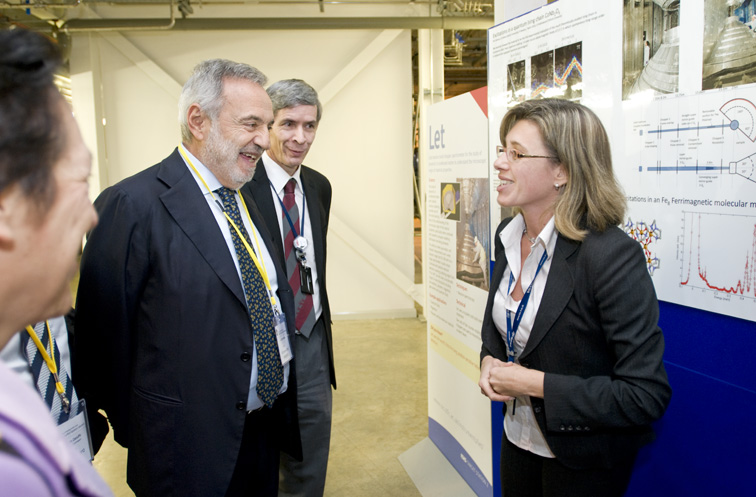As well as commemorating the anniversary, the organisations discussed the future projects to be carried out within this successful partnership.
The collaboration between ISIS and Italy has spanned a very wide range of science areas from fundamental materials investigations through to biomaterials, materials for energy and cultural heritage studies. It has also included the development of significant instrumentation and techniques which have benefited the wider neutron community.
The one day meeting, held in Rome, was attended by the British Ambassador to Italy, Christopher Prentice, Professor Luigi Nicolais, President of the CNR, Professor Cristina Messa, Delegate for Research Infrastructure Italian Ministry of Research, and Dr Andrew Taylor, Executive Director from the UK Science and Technology Facilities Council, together with other leading Italian and UK scientists. Talks described the wide variety of contributions Italy has made to neutron science at ISIS and elsewhere, as well as future developments in neutron science in Europe.
Professor Luigi Nicolais said, “It is wonderful to mark this milestone in the relationship between ISIS and Italy. We can celebrate our achievements together over many years – and know that these will be built upon in our future work together as we continue to develop neutron science and instrumentation at ISIS”.

Professor Nicolais, CNR speaks with Dr Tatiana Guidi, ISIS about the LET instrument during his visit to ISIS in 2012.
View full-size image
Professor Cristina Messa said: “Continued access to ISIS will be a key element of the Italian neutron research infrastructure strategy for the years to come”.
Dr Andrew Taylor commented, “This is a flagship European partnership of which both Italy and the UK can be proud. The mutual exchange of scientific and technical expertise has provided ISIS users with a set of world-leading scientific instruments and led to world class science results covering everything from new methods of drug delivery to cultural heritage applications. We look forward to the continued success of this partnership”.
The first agreement between ISIS and Italy was signed in 1985, making Italy one of the longest-standing and closest international partners that ISIS has.
Cultural heritage was not a commonly studied area at ISIS, but as a result of the Italian collaboration, it has expanded along with a number of other research areas. For example, the ISIS ENGIN-x and INES instruments were used to study the Ghiberti Heads, portrait sculptures of prophets by Lorenzo Ghiberti which date back to the Renaissance.
Other areas of research stemming from the Italian relationship stretch from proton motion in ice and water, studied using the Vesuvio instrument, to biological systems with health applications, such as the use of nanoparticles in drug delivery and lipid vesicle studies.
“As well as the broad range of science, Italy has also been heavily engaged with us in the development of instrumentation and techniques. This gives them the expert users who are able to get the most out of a facility like ISIS,” said Professor Robert McGreevy, Director of ISIS.
Instrument developments backed by CNR over the years of collaboration with ISIS have included Vesuvio, INES, which is run by CNR, Tosca, Sandals and Nimrod, a flagship instrument on the new ISIS Second Target Station.
In many cases, Italy has contributed through the development of new technologies for neutron scattering such as detector enhancements. The most recent collaboration since 2008 has been named the PANAREA project and includes major Italian engagement in Second Target Station instruments ChipIr, which will be used to study accelerated radiation effects on electronic devices, and Imat which will be used for neutron imaging and diffraction in materials.
There is also Italian engagement in the development of Larmor and Zoom, two further Second Target Station instruments currently nearing completion. These four instruments were made possible by a £21 million investment from UK government in 2011, in addition to the £145 million to build the second target station, increasing scientific capability and adding capacity.
